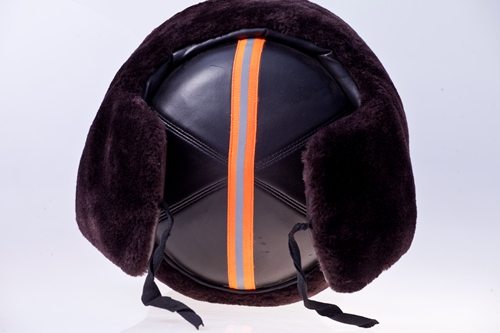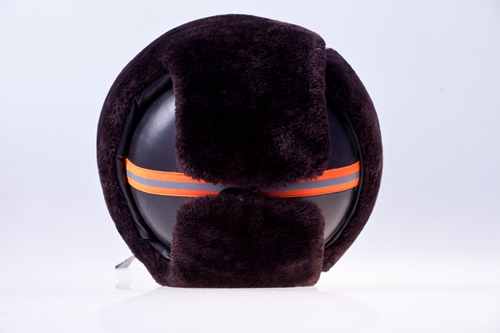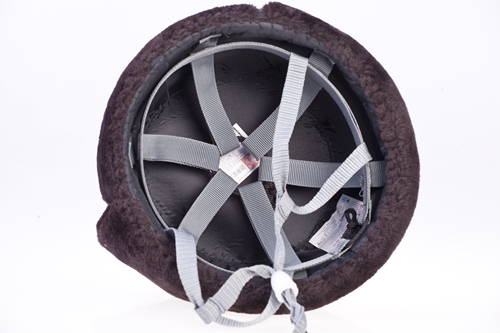Safety Helmet Hat: ANSI-Certified, With Brim or Ear Muffs?
Cold-Proof, Reflective Safety Helmets: What’s Changing On Site (and What Still Matters)
If you work outdoors in real winter, you already know the difference a good safety helmet hat makes at 5 a.m. on a wind-battered deck. Lately I’ve been seeing a quiet shift in the market: more hybrid materials, smarter linings, and reflective trims that actually hold up after months of scuffs. This model from Hengshui, Hebei (26 YongPing Road, Northern Industrial Base) leans into that trend—cold-proof construction, leather outer, plush inner, and shells in ABS/HDPE/FRP. Simple idea, but the execution is what counts.

Industry trend check
Three things are converging: thermal comfort, visibility, and certification clarity. Actually, buyers now ask first about temperature ratings and reflectivity before colors. Many contractors—especially in transport and energy—want cold-weather lids that can be supplied to meet EN 397 or ANSI/ISEA Z89.1 alongside ISO 9001 quality management. And yes, customization is getting bolder: leather outers for abrasion resistance, chenille/cashmere linings, and reflective taping you can spot across a yard at dusk.
Quick spec snapshot
| Model | Cold proof safety helmet personalized reflective effect construction engineering |
| Outer Surface | Cow leather or artificial leather (per request) |
| Inner Lining | Cashmere, chenille, artificial short velvet |
| Inner Shell Options | ABS, HDPE, or FRP |
| Standards | ISO 9001:2000 QMS; can be supplied to meet EN 397 / ANSI Z89.1 / GB 2811 (project-dependent) |
| Colors | Black, brown, blue, red, green, grey, etc. |
| Thermal Range | ≈ -20°C to +50°C (real-world use may vary) |
| Reflectivity | High-visibility tape; ≈ 300–400 cd/lx·m² (supplier data) |
| Packaging | 80×32×70 cm; ~4000 pcs per 20' container111 |
| Lead Time | 15–20 days after advance payment; sea/air/express |

Process flow, testing, and service life
Materials: leather outer is cut and stitched; thermal lining is quilted to reduce cold bridging. Shells are injection-molded (ABS/HDPE) or hand-layed (FRP) with curing and post-trim. Methods: the shell interfaces with a suspension cradle; reflective tapes applied after surface prep for adhesion. QA: impact attenuation tests (e.g., 5 kg mass at 1 m), penetration with a conical striker, shock absorption at low temp (≈ -10 to -20°C), and visor/edge abrasion checks. Internal lab samples showed peak transmitted force ≈ 4–5 kN and no striker contact at -10°C; always verify per your standard. Service life: in my experience, 3–5 years is typical; replace after severe impact, UV embrittlement, or per site policy.
Where it fits
- Cold-region construction and infrastructure (roads, bridges, tunneling)
- Rail yards and logistics at dawn/dusk (reflective tape helps a lot)
- Wind farms and transmission line maintenance
- Oil & gas well pads in winterized setups
Many customers say the lining feels warmer than it looks—surprisingly cozy. I guess the chenille/cashmere options do the heavy lifting on comfort, while the shell takes the hits.

Vendor comparison (real-world buying factors)
| Vendor | Shell Options | Thermal Lining | Certs (on request) | MOQ / Lead |
|---|---|---|---|---|
| Hengshui maker (this model) | ABS, HDPE, FRP | Cashmere/chenille/velvet | ISO 9001; EN 397 / ANSI / GB (project-based) | Flexible; 15–20 days |
| Brand B (EU) | ABS, PC blends | Fleece kits | EN 397, optional EN 50365 | Moderate; 3–5 weeks |
| Brand C (US) | HDPE | Removable knit caps | ANSI Z89.1 | Lower MOQ; 2–4 weeks |
Customization and ordering
Logos, colorways, and reflective patterning are doable. Outer in cow leather for durability or artificial leather if budgets are tight. For big rollouts, ask for sample test reports (impact, penetration, low-temp) against your chosen standard. Shipping by sea, air, or express; one 20' can load ≈ 4000 units. To be honest, I’d pilot 20–50 units on a live site for two weeks—feedback beats lab curves.
Case in point
Northern bridge crew, -12°C mornings, rail-adjacent site. After swapping to this safety helmet hat, spotters said the reflective accents cut near-misses at dawn (anecdotal, yes, but echoed by supervisors). Liners held up after repeated drying-room cycles. That’s the kind of boring reliability you quietly appreciate.
Certifications and references
- ISO 9001:2000 Quality Management Systems – International Organization for Standardization.
- EN 397:2012+A1 Industrial Safety Helmets – CEN.
- ANSI/ISEA Z89.1 Industrial Head Protection – ISEA.
- GB 2811-2019 Head Protection – Standardization Administration of China.
-
Essential Guide to Safety Helmets for the Oil and Gas Industry
NewsNov.24,2025
-
Essential Guide to Safety Helmet for Baby – Protect Little Explorers with Confidence
NewsNov.24,2025
-
Comprehensive Guide to Safety Helmet Factory – Global Insights & Innovations
NewsNov.23,2025
-
Rockman Safety Helmet: Ultimate Industrial Head Protection Guide
NewsNov.23,2025
-
Race Safety Helmet – Essential Protection for Motorsport Champions
NewsNov.22,2025
-
Offshore Safety Helmet Guide: Protecting Workers in Harsh Marine Environments
NewsNov.22,2025
